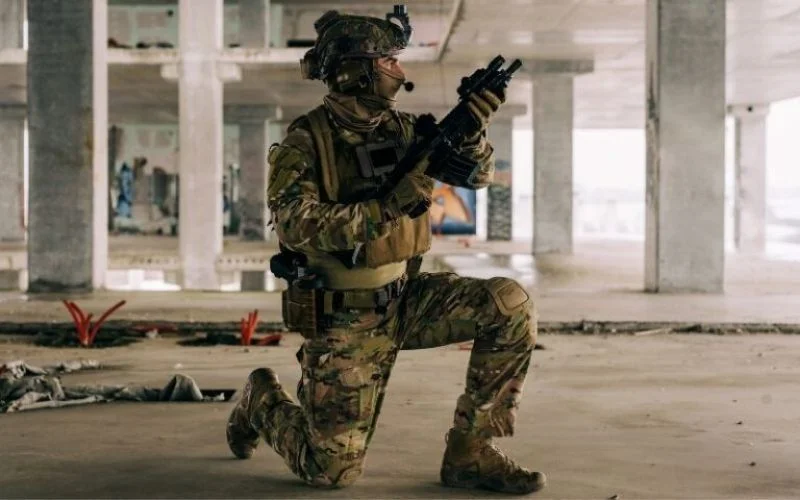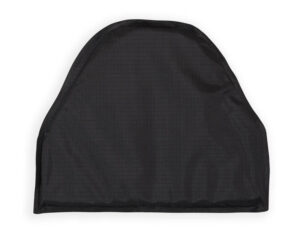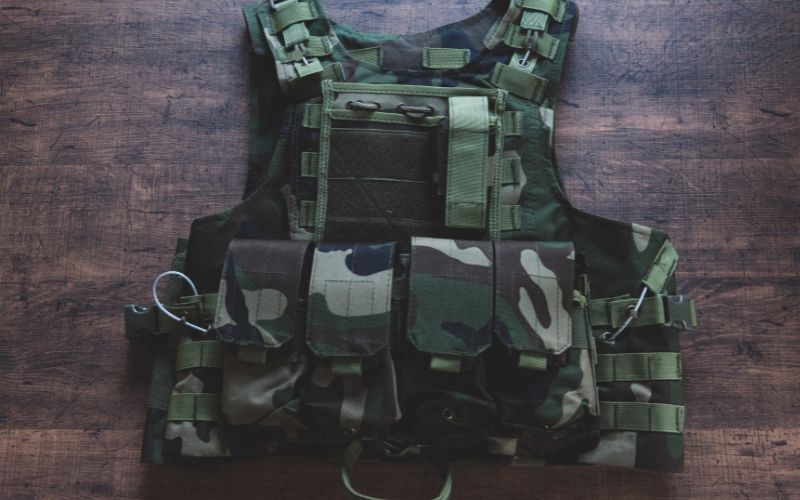How To Choose The Right Body Armor For Different Threat Levels

In today’s world, personal protection is more important than ever, especially for those in law enforcement, military, and security roles. Choosing the right body armor can mean the difference between life and death in critical situations. However, with various types of armor available, selecting the right one for different threat levels can be challenging. This guide will help you choose the right body armor for your needs. Stay protected with the Genesis Level IIIA Soft Body Armor. Shop now for ultimate defense against ballistic threats!

What is the Importance of Body Armor?
Body armor plays an important role in protecting individuals, particularly law enforcement, military personnel, and civilians in high-risk environments. It provides a vital defense against ballistic threat levels, such as bullets, and helps to reduce injury or death from gunfire and sharp weapons. Different levels of body armor are designed to meet specific threats, ensuring that users are adequately protected.
Certification standards, such as those set by the National Institute of Justice (NIJ), help ensure that body armor can withstand the specified ballistic resistance. Choosing the right body armor is critical for personal safety, as it ensures optimal protection levels and durability in dangerous situations.
Types of Body Armor

There are primarily two types of body armor: soft and hard armor. Each type offers different levels of protection and is suited to various scenarios and threats.
Soft Body Armor
Soft body armor is generally made from woven fibers and is designed to stop handgun rounds. It is lightweight, flexible, and comfortable to wear for extended periods. This type of armor is ideal for law enforcement officers and security personnel who face threats from handguns. Soft body armor can be worn under clothing, providing discreet protection. Its flexibility allows for a greater range of movement, making it suitable for daily use.
Hard Body Armor
Hard body armor includes rigid plates that provide higher protection levels against rifle rounds. These plates are often made from steel, ceramic, or polyethylene. Hard armor is heavier and less flexible but offers superior protection, making it suitable for military personnel and law enforcement officers who face high-caliber threats. Hard plates can be inserted into carriers or vests, allowing for modularity. While heavier, they are essential for high-risk environments where rifle fire is a concern.
How Can I Choose The Right Body Armor For Different Threat Levels?
To choose the right body armor, you must first assess the threat level you are likely to encounter. Threat levels vary depending on your role, environment, and potential adversaries.
The NIJ provides a standardized rating system for body armor, helping users select the appropriate protection level. The ratings are based on the armor’s ability to stop specific types of ammunition at certain velocities. Here are the common NIJ ratings and what they mean:
NIJ Level IIA
Level IIA armor is tested to stop 9mm FMJ and .40 S&W rounds. It is the lightest and most flexible, protecting against lower-velocity handgun rounds. This level is suitable for low-threat environments where mobility and comfort are priorities. Patrol officers and security personnel often use it.
NIJ Level II
Level II armor stops 9mm FMJ and .357 Magnum rounds. It offers more protection than Level IIA while remaining relatively lightweight and flexible. This level provides a good balance between security and comfort. It is ideal for law enforcement officers who may encounter higher-velocity handgun rounds.
NIJ Level IIIA
Level IIIA armor is designed to stop .357 SIG and .44 Magnum rounds. It provides the highest protection against handgun rounds, making it suitable for most law enforcement scenarios. This level is commonly used in urban environments with higher crime rates. It offers excellent protection while still being relatively comfortable to wear.
NIJ Level III
Level III armor stops 7.62mm FMJ rifle rounds. It requires hard armor plates and offers significant protection against rifle threats, making it ideal for military and tactical operations. This level is essential for situations where rifle fire is a considerable threat. It is commonly used by military personnel and special response teams.
NIJ Level IV
Level IV armor is tested to stop .30-06 AP (armor-piercing) rounds. It provides the highest level of protection and is suitable for environments with high-caliber rifle threats. This level of armor is necessary for combat zones and high-risk operations. It is the heaviest and offers the maximum protection available.
How to Choose Body Armor for Threat Level?
When selecting body armor, it’s important to match the armor’s protection capabilities with the potential threats you may face. Here’s a breakdown of how to choose the right body armor based on threat levels:
- Identify the threat: Determine the type of weapons (handguns, rifles, knives) and calibers you may be up against. Body armor levels are rated for specific threats, such as Level II, IIIA, or Level III+.
- Consider coverage: Look for coverage that protects critical areas, including the front, back, and sides. Some products offer extra panel coverage for more complete protection.
- Check ballistic resistance: Ensure the armor meets the necessary standards for ballistic resistance, such as NIJ or NATO certifications.
- Understand testing: Verify that the body armor has undergone proper testing to confirm its durability and penetration resistance against the specified threats.
- Evaluate comfort and flexibility: Choose armor that balances protection with ease, so you can move freely while maintaining safety.
- Durability: Look for items that offer long-term protection, with resistance to wear and tear over time.
Additional Features And Accessories of Body Armor
Modern body armor has various features and accessories that enhance functionality and comfort.
Plate Carriers
Plate carriers are vests designed to hold hard armor plates. They offer modularity, allowing users to add or remove plates as needed. Choose plate carriers with adjustable straps and multiple attachment points for gear and accessories. Carriers should distribute weight evenly for comfort. Quick-release mechanisms provide safety and convenience. Choose carriers with MOLLE (Modular Lightweight Load-carrying Equipment) systems for customization.
Trauma Pads
Trauma pads are placed behind hard armor plates to reduce the impact force and prevent injuries from blunt force trauma. These trauma pads add an extra layer of protection and comfort. Trauma pads absorb and disperse energy from impacts. They can enhance the overall protective capability of the armor. Regular inspection and replacement ensure pads remain effective.
Concealability
Concealable body armor is ideal for undercover operations or scenarios where discretion is necessary. These vests are designed to be worn under clothing without compromising protection. Concealable armor maintains a low profile while offering critical protection. It is suitable for covert missions and plainclothes work. Lightweight and slim designs enhance concealment and comfort.
Maintenance And Care of Body Armor
Proper maintenance and care of your body armor ensure its longevity and effectiveness.
Regular Inspections
Inspect your armor regularly for signs of wear and tear. Look for damaged stitching, plate delamination, or other issues compromising protection. Regular inspections help identify potential problems early. Immediate repairs or replacements maintain the integrity of the armor. Document inspection results for reference and accountability.
Cleaning And Storage
Follow the armor manufacturer’s instructions for cleaning and storing it. Avoid exposing body armor to harsh chemicals or extreme temperatures that could degrade the materials. Proper cleaning removes contaminants that could weaken the armor. Storage in a cool, dry place prevents damage from moisture and heat. Use protective covers or bags for added protection during storage.
Replacement Schedule
Body armor has a limited lifespan. Regularly check and adhere to the manufacturer’s recommended replacement schedule to ensure optimal protection. Over time, materials degrade and lose effectiveness. Adhering to replacement schedules ensures continued protection. Keep records of purchase dates and replacement timelines.
Conclusion
Choosing the right body armor involves understanding the threat levels, selecting the appropriate NIJ rating, and considering factors such as comfort, fit, and additional features. Whether you are a law enforcement officer, military personnel, or part of a tactical unit, having the right body armor can significantly enhance your safety and effectiveness in the field. By following Chase’s tactical guide, you can make an informed decision that will help you select the body armor that best suits your needs and operational requirements.
FAQs About Body Armor
What are the different levels of body armor?
Body armor is rated based on its ability to resist different types of ballistic threats. For example, Level II offers protection against lower-caliber handgun rounds, while Level III and IV are rated for rifle threats.
What does “III+” body armor mean?
Level III+ armor is a rating that exceeds the protection of Level III, offering additional defense against higher-caliber rounds like 5.56mm NATO. It is not an official NIJ level but is commonly used by manufacturers to indicate superior protection.
Can body armor protect against knives?
Some types of body armor include stab-resistant panels designed to protect against knives and other edged weapons. However, ballistic-resistant armor may not provide sufficient defense against stabbing threats unless specifically rated for it.
How do I know if my body armor is certified?
Certified body armor typically includes information about testing and certification on the product page. Make sure the armor meets NIJ standards or similar certifications for its level of protection.
